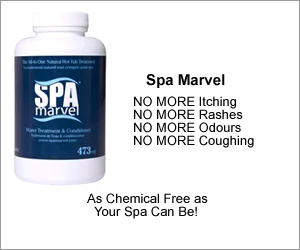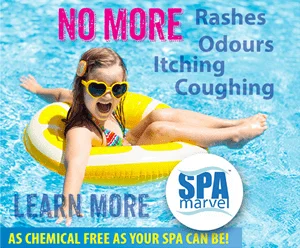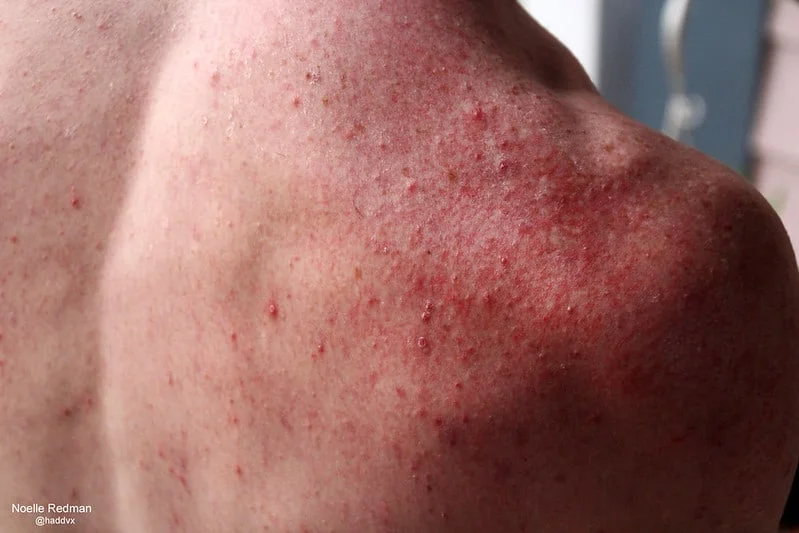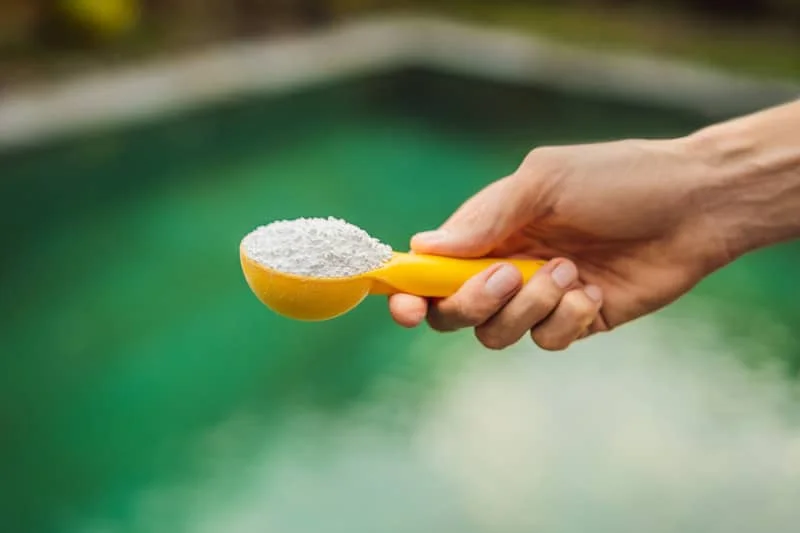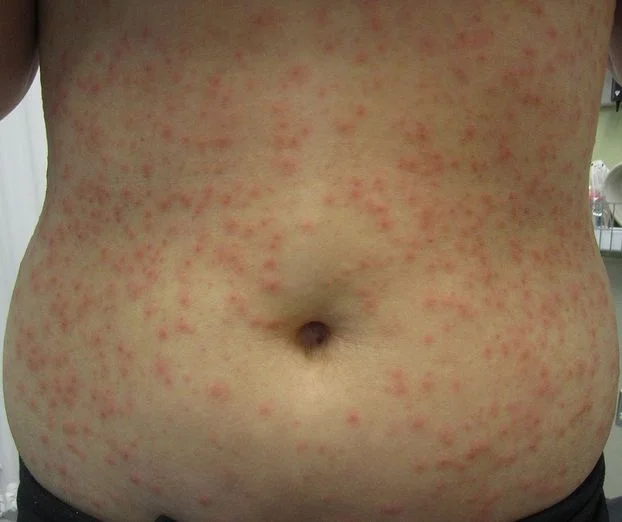Hot Tub Rash Cure & Pictures
If you have the misfortune of developing a rash after hot tub use, you’re not alone. A rash can originate from one of several causes and isn’t uncommon. Hot tub chemicals, as well as bacteria that thrive in hot tubs, can lead to a rash after hot tub use. Whatever the source, the result is itchy, red skin.
The appearance of the two distinct types of hot tub rash generally differs though. The hot tub rash pictures on this page can help you identify the cause so you can determine the most appropriate course of treatment or hot tub rash cure.
TREATMENT FOR RASH FROM HOT TUB CHEMICALS
A rash from hot tub chemicals is commonly referred to as chemical dermatitis. This form of rash after hot tub use is typically caused by chlorine or bromine used to sanitize hot tub water. This type of skin irritation occurs most commonly in those with sensitive skin. Still, anyone can experience hot tub chemical dermatitis if sanitizer levels are too high.
If you experience a rash from hot tub chemicals, at-home treatment with over-the-counter (OTC) lotions and creams is an effective hot tub rash cure and will generally resolve the condition.
Hydrocortisone cream can help relieve itching and reduce inflammation caused by chemical dermatitis. Apply it to your skin according to instructions. However, avoid putting hydrocortisone on your face because it can cause your skin to thin. Applying it to your face also poses the risk of getting it into your eyes and mouth.
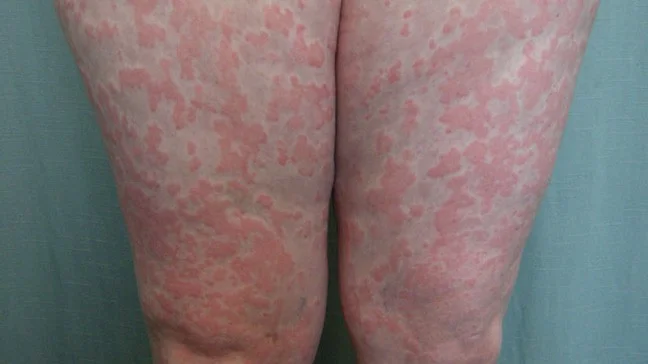
If you have hives, antihistamine cream can reduce the hives and also alleviate the itch. Benadryl and other oral medications that contain diphenhydramine is another option for relieving hives.
When using OTC medications to treat a rash from hot tub chemicals, follow the instructions carefully. Overuse of these products increases your risk of an adverse reaction. Also, excess use can lead you to develop a tolerance. This will reduce the effectiveness of the active ingredients next time you use the medications for a rash after hot tub use.
While waiting for your rash to clear up, it’s also best to avoid swimming pools and hot tubs to prevent aggravating the rash. However, if you do use a pool or spa, take preventative measures to protect your skin. Look for a wash or body lotion specially formulated to prevent chlorine rash. Also, consider Spa Marvel Water Treatment & Conditioner to reduce the amount and frequency of adding chemicals to maintain your spa.
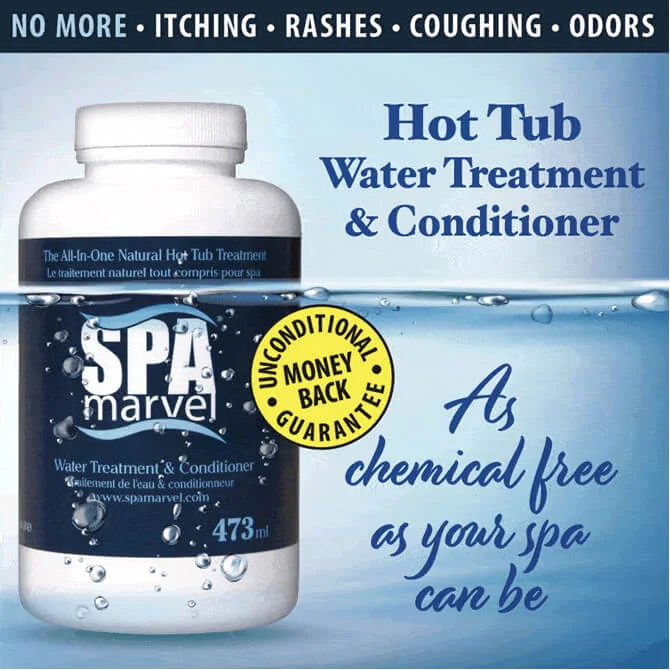
PSEUDOMONAS AERUGINOSA FOLLICULITIS TREATMENT
If you’ve contracted a bacterial infection from the hot tub, similar to that seen in hot tub rash pictures, the culprit is most likely pseudomonas aeruginosa bacteria. This condition, also known as hot tub folliculitis rash, usually clears up on its own within 2 to 10 days, so may not require a hot tub rash cure. In the meantime, you can manage the itch with one or more of the following remedies, including hot tub folliculitis treatment with vinegar.
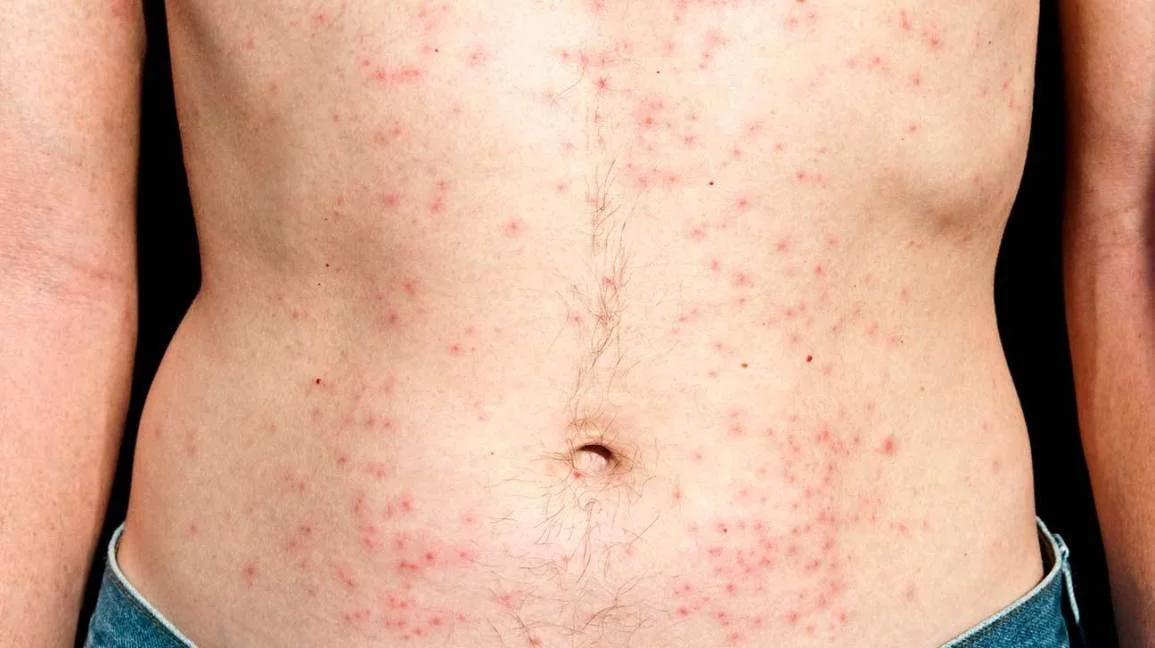
Hot tub folliculitis home treatment
Mayo Clinic and other medical experts recommend several options for hot tub folliculitis home treatment. These will relieve your itch and discomfort and reduce the risk of secondary infection.
-
Use warm saltwater compresses several times a day to alleviate itchiness and promote healing. Mix 1 teaspoon of table salt and 2 cups of water to create a saltwater solution then moisten a washcloth or compress with the solution.
-
Apply Neosporin or another antibacterial cream to prevent secondary infection.
-
Wash with antibacterial soap to help kill bacteria. However, wash gently to avoid aggravating the condition.
Hot tub folliculitis treatment with vinegar
Vinegar is another remedy commonly recommended by medical experts. Hot tub folliculitis treatment with vinegar offers great itch-relief if you can tolerate smelling like vinegar. Just follow these steps.
- Combine 1 part white or apple cider vinegar to 2 parts lukewarm water.
- Soak a washcloth in the solution.
- Apply the washcloth to the itchy area for 5 minutes.
- Then repeat steps 2 and 3 for a total of 20 minutes.
- Perform this process 2 to 4 times per day.
Oatmeal treatment for rash after a hot tub
Oatmeal is also an effective hot tub folliculitis home treatment. One method is an oatmeal bath. Just grind a cup of oats into a fine powder then add it to your bathtub water.
The second method is to apply oatmeal lotion to the affected areas of your skin. Colloidal oatmeal lotion is available in the skincare aisle of pharmacies. You can also find recipes online to make oatmeal lotion yourself.
Hot tub rash pictures
The following hot tub rash pictures are examples of the various forms you might experience that may require a hot tub rash cure.
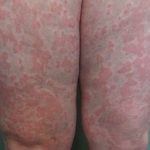
Chlorine Rash
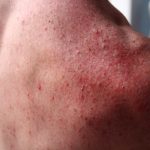
Chlorine Rash
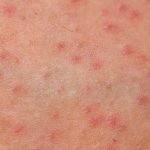
Hot tub folliculitis
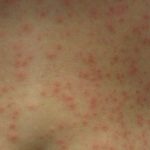 Hot tub rash
Hot tub rash
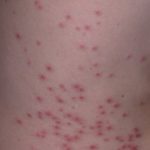
Swimming pool rash

Hot Tub Rash

Hot tub folliculitis

Swimming pool rash

Jacuzzi rash
If hot tub rash doesn’t go away
Despite hot tub folliculitis’ discomfort and unsightly appearance (as seen in hot tub rash pictures), it usually goes away relatively quickly on its own. However, if the rash is still present after ten days of hot tub folliculitis home treatment or if it’s severe or recurs, seek medical treatment. Although rare, the condition can lead to life-threatening complications.
Unfortunately, because pseudomonas aeruginosa is resistant to antibiotics, there’s no sure bacterial hot tub rash cure. Still, in severe cases or when the rash doesn’t clear on its own, physicians do often prescribe antibiotics to prevent other or more severe infections. Silver sulfadiazine cream, which is an antibiotic, is commonly prescribed for pseudomonas aeruginosa folliculitis treatment. Medical treatment is particularly essential for anyone with an impaired immune system.



